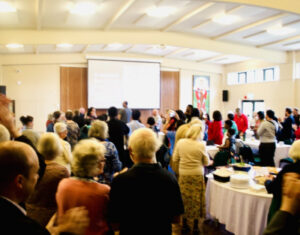The Cathedral of St John the Baptist in Norwich has been awarded a grant of £57,000 from Historic England to support vital conservation work, ensuring the long-term protection of this architectural and spiritual landmark.
The funding will enable essential investigations into the cathedral’s roof and drainage system, which have suffered from increased leaks and water damage. These assessments mark the crucial first stage in a wider programme of repairs designed to preserve the Grade I listed building, which was added to Historic England’s Heritage at Risk register in 2024.
Built in the late 19th century by the renowned architect George Gilbert Scott Junior and completed by his brother John Oldrid Scott, St John the Baptist Cathedral is the second largest Catholic cathedral in England. It stands as one of the finest examples of Victorian Gothic Revival architecture in the country, drawing visitors from across the world who marvel at its striking design, soaring spire, and magnificent stained-glass windows. The intricate craftsmanship and detailed stonework serve as a testament to the dedication of those who sought to create a truly awe-inspiring house of worship.
However, the cathedral is more than just an architectural gem; it is a living place of faith, worship, and service. As the Mother Church of the Diocese of East Anglia, it plays a central role in the spiritual lives of countless Catholics, providing a place for regular Mass, sacraments, and solemn celebrations that bring people together in prayer and reflection. The cathedral’s sacred atmosphere offers solace and inspiration to visitors, pilgrims, and worshippers alike, reinforcing its role as a beacon of faith in the region.

Beyond its religious significance, St John the Baptist Cathedral is deeply woven into the fabric of the local community. It has long been a centre of outreach, welcoming and supporting those in need. The cathedral has partnered with Norwich City Council to host a winter night shelter programme for rough sleepers and has provided space for a range of community support initiatives, including the St Vincent de Paul Society, social gatherings, and educational events. Its halls are frequently used for a variety of activities, from fitness classes to mother-and-baby groups, illustrating its commitment to fostering a welcoming and inclusive environment for all.
Cathedral Manager, Charley Purves, welcomed the grant, saying: “This funding from Historic England is an important first step in the journey, enabling us to better understand the issues the building is facing so that the work required is suitably planned and allows us to look to the future too. We are grateful to Historic England for supporting the Cathedral in this way.”
The cathedral remains open daily, welcoming all who wish to attend Mass, pray in quiet reflection, marvel at its architectural splendour, or visit the shop and café. St John the Baptist stands as a powerful symbol of Catholic communion, where the faithful gather to celebrate and live out their faith. The presence of the Bishop’s chair, or cathedra, in the sanctuary underscores its importance as the central church of the diocese.

With this essential funding, work can begin to safeguard the cathedral’s structure, ensuring that its historic beauty, architectural grandeur, and vital community role continue to inspire and serve generations to come. This grant is a crucial step in preserving not only a physical landmark but also a living spiritual and cultural heritage that continues to shape and enrich the lives of many.
You can listen to Charley Purves, Cathedral Manager discussing the essential works and what it means for the cathedral on BBC Radio Norfolk. Follow this link and go to 07.17 for the interview.